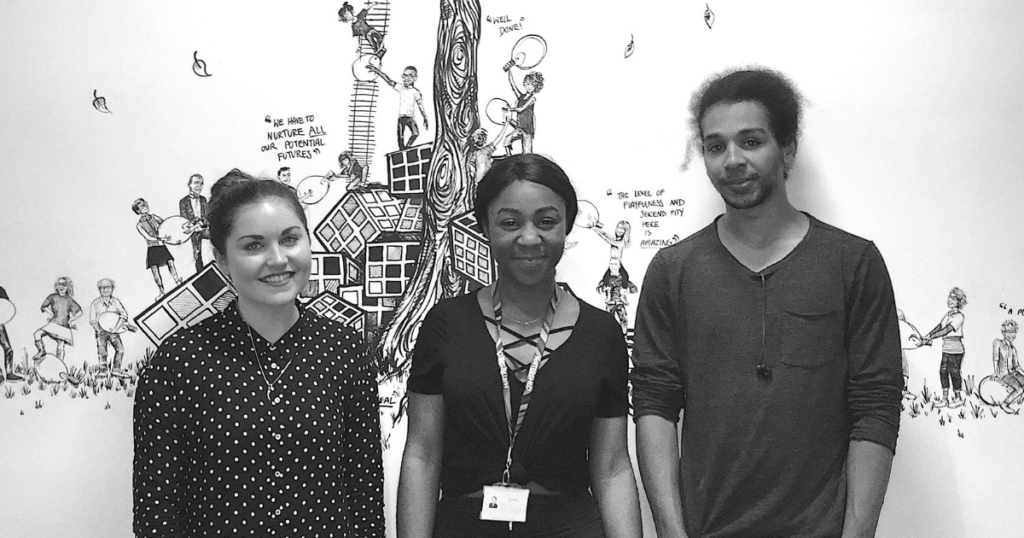Everything you need to know about mind mapping
How many times have you written a shopping list and forgotten at least one thing on it? Have you ever looked at your to-do list and felt that rising panic that leaves you zoning out in front of the TV for hours instead of being productive? This happens because our brains don’t work in a linear or sequential way. Our thoughts aren’t filed away in different boxes and don’t fit neatly into a list.
Our minds are a collection of pathways that cross over and intersect, sometimes in ways that you would never expect them to. If you travelled to a new city, you use some kind of direction or you risk getting lost. Why would you expect to reach your best ideas without the same kind of guidance? That’s where mind maps come in.
Why mind map?
The man who is credited for the widespread use of mind maps, Buzan, theorises that our brains work by radial thinking. Essentially, when we have a thought, we have an infinite amount of associations relating to that thought, spanning out across both hemispheres of our brain. Mind mapping works with your brain, instead of against it, by allowing connections to develop freely and naturally, allowing you to tap into a level of creativity you might have never reached before.
Mind mapping has developed over time and you can now find mind mapping software and mind mapping templates that help you mind map online, which opens up the opportunity to develop ideas whenever you like, when you are on the go or collaboratively with a team.
Like most things, mind mapping takes practice, but it is also really easy to get started. As mind mapping is a creative way to think, it leaves lots of freedom for experimentation so you can find out what works for you.
Make a mind map
First things first, your mind map needs a central idea. This can be as vague or specific as you like, and you can always change it later on. If you keep your central idea the same throughout, it can be useful to look back at the progress of your mind map and see where ideas originated from. You could choose a picture, text, or both, for your starting point. Choose whatever helps you spark ideas.
From the central idea in your mind map, add your first thoughts, stemming outwards. Don’t overthink this part, just put down the key words and phrases that come to your mind. Avoid long sentences where possible, because these are harder to read, and the more work your brain has to do, the less creative it will be. From here you can expand as much as you want, or at least until the page (or screen) is full!
Add ideas to your mind map as they come to you. Don’t restrict yourself to work on one thought at a time. One of the most enjoyable things about mind mapping is the tangents that you end up on, which could result in some great work!
Creative mind maps
Colour is a key enhancer of memory as well as creativity, so use different colours for different ideas. If you’re making a mind map online or using a mind mapping software, choose one that lets you play with the colours and pictures as much as possible, like Mind Map Pro. Adding pictures to your sub ideas could spark more thoughts and expand your ideas further, in more innovative ways. “A picture paints a thousand words,” as the saying goes!
Your connections don’t have to be confined to just have one branch in your mind map. You can also add associative links, which are represented as dotted lines in Mind Map Pro. Rarely does one association not link to another, somehow, so why not connect sub ideas to each other as well as the central idea to show the different relationships in your mind map?
Mind map templates
If you’re using a mind map template, don’t be afraid to move things around. Having a structure to work from will help you get started and ensure that you cover every angle, but don’t let it limit the reach of your mind map.
Mind mapping is a great tool for almost any kind of brainstorming. It can help if you with business and project planning, preparing an essay, learning a language or setting career goals, but it can also be a great way of working as part of a team.
Having everyone input their ideas into an online mind map is a simple way to make sure everyone has a chance to contribute ideas. You can encourage creative thinking and record all the data you need. Try it out next time you are in a meeting and see how engagement increases when thinking becomes collaborative and your notes are in a visual form. Bonus points if you create a mind map on a shared screen, online or using mind mapping software, which everyone can edit as you go.
Mind maps for business and innovation
Perhaps the most consistent thing about mind maps is that the more you use them, the more they will surprise you. If you are free and inventive about how you create and use mind maps, you will constantly discover new gems in your mind, and ideas from your team, that you never expected.
One example of how mind mapping can open doors in unexpected ways is in the world of negotiations. In an article in the Wall Street Journal, Zack Anchors describes how financial advisor Rob O’Dell of Wheaton Wealth Partners of Wheaton, Illinois used mind mapping as a mediator tool in a tense financial battle. One brother wanted to sell his shares of the family business to another, who had the intention of passing the business down to his children one day.
A situation which seemed quite straight forward at first turned out to be a web of family politics and complicated business finances. O’Dell introduced the idea of mind mapping to the brothers, and used the business as the central idea.
Branching out in the mind map were the business’ interests, assets, and liabilities. The brothers kept adding branches, using a shared monitor, and filling up space with what was important to each of them. Mind mapping, for any reason, rewards collaboration over competition, so quickly the brothers dropped their defences and realised that a lot of their interests overlapped. They reached a decision which they were both happy with and now O’Dell uses mind mapping tools with all of his clients.
Mind mapping for education
Education is a perfect setting for mind mapping. The technique has been proven to help with understanding complex ideas, enhancing memory and improving planning, which are all important elements of the learning process.
A study by R. Tamil Selvi and G. Chandramohan (2018) looked at mind mapping as a technique to educate ‘Materials and Metallurgy’ to third year engineering undergraduates in an Engineering Institution.
Students were encouraged to use mind maps as part of group work, individual planning and revision. The professor also regularly used the technique in class. The study found that a large majority felt that it had helped them understand the course and retain the information. It was especially helpful for those who didn’t identify as having an aptitude for maths to grasp complicated mathematical problems.
Most notably, over 90% of the students clearly indicated that mind mapping has given them a very good opportunity to evaluate, work on and improve their ability for interactive learning.
Mind mapping makes any task enjoyable
Another fantastic way to use mind mapping is to take the bland and boxed-in tasks that we need to do in ordinary life and make them visual and fun. This could be anything, including deciding which car insurance to buy or deciding how to organise your email inbox.
A good example for business is risk assessments. This sort of assessment is integral to any business, but team members will often switch off when it is mentioned. Using a mind map to calculate and consider risk makes it more engaging, increasing the likelihood that the assessment will be thorough, particularly if there is collaboration between a team who are using a mind mapping software or creating an online mind map.
You can create a risk assessment template to be used as many times as is needed, or rework Mind Map Pro’s SWOT analysis tool, which helps you assess strengths, weaknesses, opportunities and threats in your mind map.
Often with mundane, day-to-day tasks, our minds switch into autopilot. This is just the brain’s way of saving energy, and that can be useful. However, when you are trying to analyse something as important as potential risks, we need all cylinders firing.
Starting by adding each risk as a sub idea, you can expand with any relating information and the likelihood of each risk, including the severity of the potential risk and the chances or methods of reducing it. Using visual stimulus will no doubt keep you interested for longer and help you create a detailed piece of work to be proud of.
Start mind mapping
Sign up for Mind Map Pro to use free online mind mapping software instantly.
Read through our Help Site for information on getting started, SWOT analysis, mind mapping with teams and how to add tasks to your mind map.



